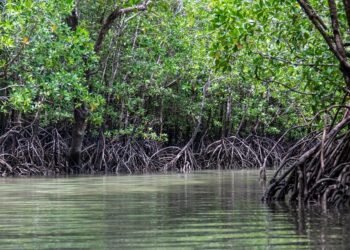The sustained increase in active mobile phone lines in the country and the growing number of users connected to the Internet through them have saturated the international output capacities of telecommunications in Cuba during certain hours, according to what sector authorities recognized this Tuesday.
“The capacities that we had in (the underwater cable) ALBA-1 are saturated, which is why in those times of high concurrency the demand is not satisfied,” Tania Velázquez Rodríguez, executive president of the Cuban Telecommunications Company S.A., (ETECSA), said to Cubadebate.
This is, apparently, the main reason behind the numerous complaints from users about repeated connectivity problems in the country.
https://twitter.com/ETECSA_Cuba/status/1620539143771258881?ref_src=twsrc%5Etfw%7Ctwcamp%5Etweetembed%7Ctwterm%5E1620539143771258881%7Ctwgr%5Ee1fda4436d33490646e319bd15c2629cd5cbf5f8%7Ctwcon%5Es1_&ref_url=https%3A%2F%2Foncubanews.com%2Fcuba%2Fpor-que-esta-lenta-la-conexion-en-cuba-alta-demanda-y-falta-de-inversion-explica-etecsa%2F
In 2022, the number of users connected to the Internet via cell phones grew by more than one million, reaching 6.7 million customers.
This increase is reflected in the volume of traffic, which increased by 63% in the same period: from 189,000 terabytes in 2021 to 309,000 last year.
At the end of 2022, there were 274,000 connected homes, with a growth of 22,000 services compared to the previous year.
Arimao, in April
The ETECSA official recognized that this growth has not been accompanied by the necessary volume of investment in infrastructure to support it.
“This generates a high degree of concurrence in the access network, as it cannot grow with a sufficient level of radio base stations due to economic difficulties in acquiring new technologies and equipment,” she explained.
ETECSA estimates that between 8:00 p.m. and 10:00 p.m., peak service time, more than two million concurrent users (users who use system resources at the same time) use the network, so it is in this segment in which the greatest difficulties to surf the internet are reported.
Velázquez Rodríguez recognized that there are “bottlenecks” in the international outlet and considered that they must be solved by enabling new capacities through the new Arimao international underwater cable.
“We hope to get it up and running in April,” she added.
Work begins to install underwater cable linking Cuba with Martinique
Blackouts and Internet surfing
The frequent cuts in the supply of electricity in recent months deteriorate the quality of Internet surfing and in many cases cancel it due to lack of energy backup, explained Velázquez Rodríguez.
Although all radio base stations come with batteries, only 25% of the little more than 5,000 installed in the country currently has backup to face this contingency.
“Although the nodes have batteries, they are not designed for such intensive use. We have had cases in which there has been a power cut and the radio base is turned off,” she explained.
To alleviate the situation, she said that efforts have been made to acquire these energy storage devices, but their high cost (30,000 dollars per unit) has prevented it.
The president of ETECSA also referred to other necessary investments and work in other layers of the network that allow the smooth transit of the large mass of data that customers currently demand.
In 2021 the average demand per user was 5.65 gigabytes and it climbed to 7.23 in 2022.
Better use of infrastructure
Velázquez Rodríguez mentioned some actions that have been undertaken in the operational area that would allow better conditions for surfing, making better use of the installed infrastructure.
“In those radio bases with this possibility, frequencies such as 2,100 MHz are being enabled in Havana and Matanzas. The process will be extended to the rest of the country, considering the technical conditions. This provides additional capacity for people to connect. Let’s remember that today 4G surfing is enabled in the 1,800 MHz band”, the official explained.
The strategy designed includes the authorization of the 700 MHz band in provinces where the process of partial transition to digital television is taking place, such as Pinar del Río and Artemisa, and the 900 MHz band for 4G surfing, “which will significantly influence the quality of service.”
Consumption peaks with recharges
The highest authority of ETECSA explained that the high consumption of data coincides with the usual promotions promoted by the company, such as quintupling the available balance.
She explained that they are necessary to obtain the fresh currencies that allow the fresh investments destined to expand the infrastructure.
“It is an incentive to stimulate recharges from abroad, since the combined packages came out there has been a shift towards the consumption of national packages with payments in CUP and income from abroad has decreased,” she said.
“We are very satisfied to have offers in CUP that please the majority of our customers, but it is also important to offer alternatives to attract the currencies that allow us to sustain the service and do it with quality,” she added.










